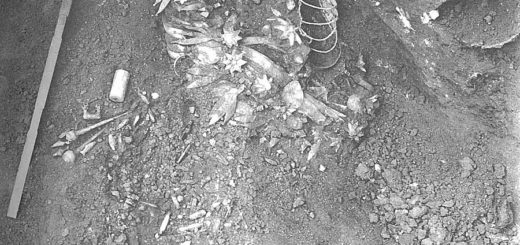New Project Aims To Solve Mysterious Millennia-Old Rock Carvings Of Argyll, Scotland
Using 3D scanning technology, a team of experts and amateur archaeologists will study and create a new digital database of mysterious rock carvings left millennia ago by inhabitants of Argyll, an ancient shire of western Scotland.
The mysterious motifs – Achnabreck Cup and Ring Rocks – consist of a series of spiral ring marks – deep depressions in the rock surrounded by Saturn-like concentric rings and horseshoe shapes, reports Edinburgh Evening News.

The Achnabreck rings that cover several rocky outcrops, are among the largest ever discovered in Europe – some measuring one meter in diameter. It is believed that the intricate designs were carved out over 5,000 years ago.
The ancient site was first discovered by Sir James Simpson back in 1864, before being comprehensively surveyed and mapped out a century later by Ronald W. B. Morris.
For now, not much is known about the Achnabreck mysterious rings but some historians have suggested that they may have had a symbolic or spiritualistic purpose and the site was a sacred to local people.
In a new project launched at the start of 2017, Scottish researchers will study and analyze more than 2,000 similar carvings dated back several thousand years and scattered across the Scottish landscape.
Archeologist George Currie who is among the group of experts, working in the project, said that “the idea is to cover the whole of Scotland to record all of the rock art in 3D where ever possible.”
“We will be able to locate these motifs in the landscape and compare how they vary from one area to another. It will also be possible to look at how motifs were used through time – many have symbolism that date backs thousands of years and we know little about why they were created.”



 Creators of mankind
Creators of mankind Description of “Tall white aliens”
Description of “Tall white aliens” Where they came from?
Where they came from? About hostile civilizations
About hostile civilizations The war for the Earth
The war for the Earth “Tall white aliens” about eternal life
“Tall white aliens” about eternal life Video: “Nordic aliens”
Video: “Nordic aliens” Aliens
Aliens Alien encounters
Alien encounters The aliens base
The aliens base UFO
UFO Technology UFO
Technology UFO Underground civilization
Underground civilization Ancient alien artifacts
Ancient alien artifacts Military and UFO
Military and UFO Mysteries and hypotheses
Mysteries and hypotheses Scientific facts
Scientific facts


















